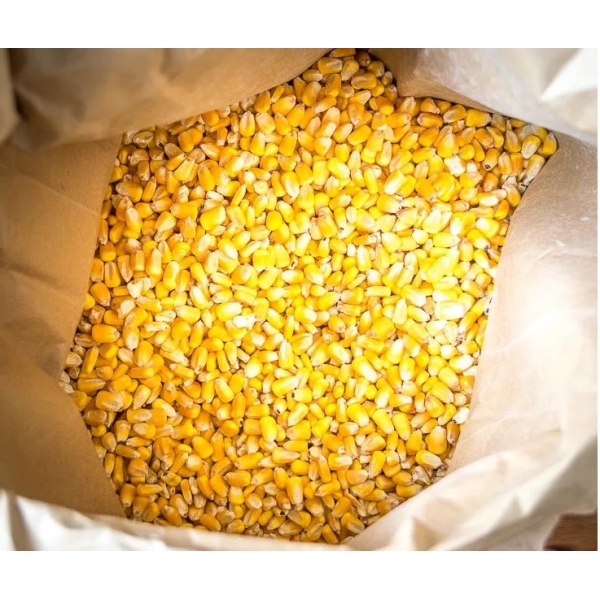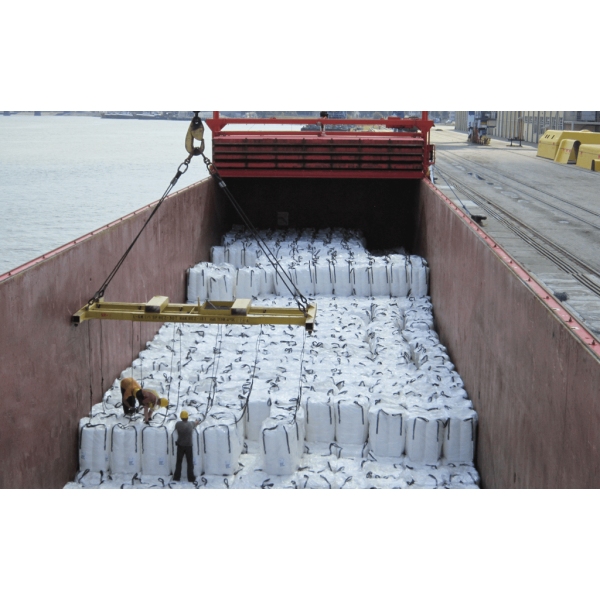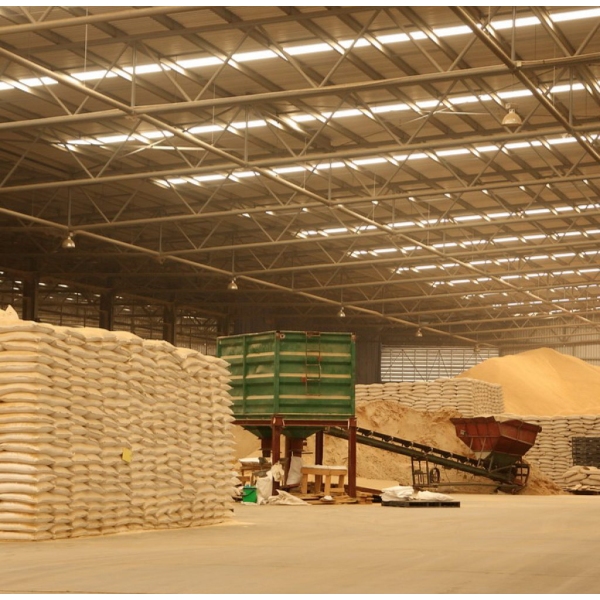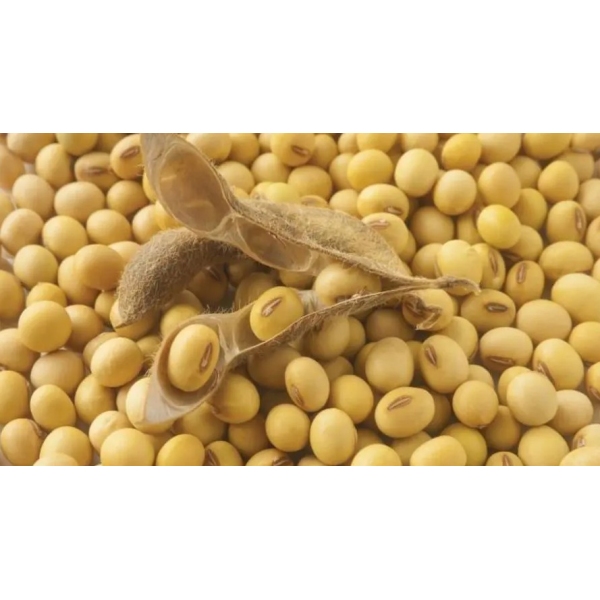- Product Details
Yellow Corn Maize Milho Animal Feed
Specification 1 - yellow corn grade GMO for Feed quality
Standard export quality
Test weight : 54 pounds/min/bushel total damage 5% max
Protein: at least 10%
Fat: 2.5% max
Moisture 13,5 – 14 % maximum
Max splits 20%
Fiber: 4.5% max
Foreign matter 1% max radiation normal
Crop Curent
Heat damaged 5% maximum
Animal Nutrition: Suitable
All kinds of molds: Free
Sprouted Grains: Free
Specification 2 - yellow corn grade # 2 Non-GMO for human quality Standard export quality
Test weight : 54 pounds/min/bushel total damage 5% max Protein: at least 12%
Fat: 2.5% max
Moisture 13,5 – 14 % maximum
Max splits 20%
Fiber: 4.5% max
Foreign matter 1% max radiation normal Crop 2021 or Curent
Heat damaged 5% maximum
Max Splits: 20%
Protein: 35% basis, 34% minimum
Max Color: 2%
Oil Content 18,5% basis, 18,0% minimum
Husks: No Husks
Test Weight: 54 Pounds/Min/Bushel
Total Damaged Kernels: 3% Max
Heat damaged Kernels: 0,50 % maximum
No Rock, Gravel, Sand, larger pieces of Wood or any particles that are harmful to Human consumption.
INSPECCION: SGS
PACKAGING: Bulk
CONTAINER: 1 Container of 40 ft = 27 MT
Brazil Corn Production
Brazillian Corn Export Conditions
- Contract time: 12 to 60 months
- Departure: Port of Santos or other brazilian port
- Packaging: 50 KG bags
- Minimum: 12.500 MT and multiple
Brazil’s corn production in marketing year 2022-23 is forecast to reach a record 126 million tonnes based on the growing demand and price for corn in both the domestic and international market, according to a Global Agricultural Information Network report from the US Department of Agriculture’s Foreign Agricultural Service (FAS). The projected corn output is nearly 9% higher than the estimated total of 116 million tonnes in 2021-22. The FAS maintained the forecast of planted area at 22.5 million hectares, nearly 4% higher than the harvested area of this current season. FAS increased the forecast for corn exports in 2022-23 to 47 million tonnes, up 2.5 million tonnes from the previous year. According to a USDA report, Brazil could export as much as 5 million tonnes of corn to China alone in 2023, making it a key supplier to the world’s most populous country along with the United States. China is expected to import about 18 million tonnes of corn in the upcoming marketing year.
Brazil has two corn crops. The second crop, or safrinha, produces more than 70% of the total and is planted right after the soybean harvest, typically in January and February. While growing conditions are currently good, the La Niña weather pattern could still derail the crop.
Brazilian Corn - In 2019 Brazil became the largest exporter of corn in the world, even surpassing the United States, with shipments of 44.9 million tons, an increase of 88% in relation to the previous year. Brazilian corn production is the third largest in the world with increased productivity, and this record has made corn exports 5th in the ranking as one of the most exported products in Brazil. Japan, Iran, Vietnam, South Korea and Egypt are some of the main destinations for Brazilian corn.
USA Corn Production
USA Corn is grown in nearly all 50 states, production is primarily concentrated in the northern and Midwestern states collectively known as the U.S. Corn Belt. In the 2021/2022 crop marketing year, (Sept. 1- Aug. 31) the United States exported 62.7 million metric tons (2.5 billion bushels) of corn to 62 different countries. Mexico (27 percent), China and Japan made up the top three U.S. corn export destinations.
The Corn Belt stretches from the panhandle of Texas up to North Dakota and east to Ohio. The amount of corn harvested in this region annually has increased by 400% since 1950, from 2 billion to 10 billion bushels. Corn producing states include Illinois, Indiana, Iowa, Kansas, Kentucky, Michigan, Minnesota, Missouri, Nebraska, North Dakota, Ohio, South Dakota, Wisconsin.
The United States has just about 90 million planted acres of corn, and there’s a reason people refer to the crop as yellow gold. In 2021, U.S. corn was worth over $86 billion, according to calculations from United States Department of Agriculture. According to the USDA, the U.S. is the largest consumer, producer and exporter of corn in the world.
Most of the crop is used domestically as the main energy ingredient in livestock feed and for fuel ethanol production. Corn is also processed into a multitude of food and industrial products including starch, sweeteners, corn oil, and beverage and industrial alcohols. Additionally, corn is incredibly versatile. We can eat it, process it into syrup and use it as a sweetener, fuel our cars with it, and feed it to our animals. Currently, we use approximately 40 percent of corn grown in the U.S to create ethanol, and 36 percent to feed animals.
| Crop | Average annual production 2015 to 2019 | Primary growing areas |
Seeding | Flowering or heading | Harvesting |
| Corn | 14 billion bushels | Iowa Illinois Nebraska Minnesota Indiana Kansas |
April and May | July through first half of August | October and November |
There are seven major types of corn in USA: 1)
TYPES OF CORN
DENT CORN
FIELD CORN
Dent corn, which is also known as "field corn," is an easy type of corn to spot -- there's a dent in the crown of each individual kernel of corn. It has a high starch and low sugar content, which means it's not sweet and juicy like the corn you buy to eat from the grocery store or farmers market. Because it's not meant to be eaten fresh, dent corn is harvested in its mature stage when the kernels are dry and then processed. Most dent corn grown in the U.S. winds up as animal feed, though because of its soft starch, dent corn is used as a grain in products like chips and masa (a corn flour used to make corn tortillas). Dent corn is also used to make moonshine and bourbon. The majority of corn grown in the U.S. is yellow dent corn, though you may also find dent corn in a range of colors.
FLINT CORN
Flint corn is also known as Indian corn or calico corn, and it's even harder than dent corn. If you see decorative corn (those fall-colored ears with the husks still on them), it's almost certain to be a type of flint corn. However, flint corn has a high nutrient value and once the grains are dried, they can be used for any number of foods, including corn meal, corn flour, hominy, polenta, and grits. Flint corn that has a hard outer shell is what gets turned into popcorn. The kernels are dried to a point where they have a certain moisture content left; then when the dried kernels are heated, the remaining moisture turns into steam and causes the kernel to turn inside out, or pop. This type of corn is grown mostly in South America in countries like Argentina. In the U.S., you may find it at local stores and farmers' markets as popcorn.
FLOUR CORN
Flour corn has soft-shelled, starchy kernels, which make it the best choice for making corn flour. Each kernel on flour corn is filled with soft starches, making it very easy to grind. Most flour corn is white, but you can grow it in other colors, such as blue.
POD CORN
The least know member of the corn family is pod corn. Pod corn (Zea mays var. tunicata) is a variety of maize that has kernels enclosed in elongated glumes. Because the Tunicate phenotype is a universal characteristic of wild grasses and is different from naked kernels in maize varieties common today, pod corn is thought to be a progenitor of maize by some researchers. Pod corn is mostly found in South and Central America. Pod corn or wild maize is a variety of maize. It is not a wild ancestor of maize but rather a mutant that forms leaves around each kernel.
POPCORN
Popcorn is another type of flint corn.
Popcorn kernels have hard outer shells that hold soft starches inside.
When heated, the outer shell of each popcorn kernel converts its moisture to steam, which builds up pressure that makes the kernels pop and expand.
SWEET CORN
Sweet corn is what you eat for dinner (or breakfast or lunch -- there's no bad time to eat fresh corn). It has a high sugar content, which is why it's desirable as a fresh corn. It's picked while immature, before the sugar has a chance to turn into starch, in what is known as the milk stage. Fresh, sweet corn is juicy; the juice, or "milk," is how you get the creaminess of cream corn. This type of corn comes in white, yellow, and colored varieties, and at the grocery store, you're generally just going to find it labeled as "corn." You may also see super-sweet corn; this variety is sweet corn with the sugar content enhanced for a sweeter flavor.
HEIRLOOM CORN
Heirloom corn refers to corn that's not mass produced and tends to be varieties that have all but disappeared.
WAXY CORN
Waxy corn or glutinous corn is a type of field corn characterized by its sticky texture when cooked as a result of larger amounts of amylopectin. The waxy corn was first described from a specimen from China in 1909. Waxy corn starch, also known as waxy maize starch, consists of only amylopectin molecules, giving this starch different and useful properties. This genetic variety of corn was discovered in China in the early 1900s, when corn plants were transferred from the Americas. The starch stains red with iodine, not blue as ordinary starches do. When the corn kernel is cut, the endosperm appears shiny and wax-like, and the corn was termed waxy corn or waxy maize. However, it contains no wax.
USE OF CORNS
Cornmeal
Penicillin
Starch
Maize Starch
Sugar
Whiskey
Ethanol
Cornsilk
Corn Cobs
Corn Flour
Oil
Glue
USA NON GMO YELLOW CORN Grade #2 suitable for human consumption SPECIFICATION
- SAMPLE TRADER OFFERING TERMS
PRODUCT DELIVERY
The date of Bill of Lading (BL) shall be considered the date of delivery. The spot delivery shall begin within 30 to 45 days after receipt and acceptance of the SBLC. Minimum is subject to slight and reasonable variations in schedules due to the customary and usual exigencies.
CONTRACTED QUANTITY
The SELLER guarantees that each shipment of the YELLOW CORN NON GMO will be provided with a weight and quality inspection certificate at the port of loading and on board prior to shipment. Such certificates shall be provided by Société Générale de Surveillance (SGS) at SELLER's expense, and shall be considered final. Copies of these certificates shall be sent by e-mail to the Buyer prior to shipment.
The SELLER shall instruct the said authority to carry out the inspection in strict conformity with the rules of the International Chamber of Commerce (ICC). The BUYER shall, at its own expense, carry out an additional inspection at the port of discharge which is not binding on the SELLER.
PACKING
IN BULK
PAYMENT TERM
For the purchase # MT (# Tons) (+/-5%) of NON GMO YELLOW CORN per month: A transferred STAND BY Letter of Credit (SBLC), Message Swift MT700, Irrevocable, Operational, cash backed, divisible, issued or confirmed by Top 25/50 Bank, with value of ONE MONTH supply is required as payment guarantee; THAT IS # MT (# Tons) USD $ ($US dollars). and valid for 12 months + 1 day, with draft text approved by the Seller.
Buyer shall issue the ARDLC for shipment IMMEDIATELY after execution of the SPA and receipt of the Pro-Forma Invoice.
After loading the vessel, the Seller will send the electronic version of the original shipping documents to the Buyer by email.
Unconditional payment, 100% on demand, shall be made for each shipment upon presentation of the original shipping documents at the Seller's Bank window counter. The Buyer's Bank will pay by Swift MT103. Upon receipt of the funds, the Seller's Bank will send the original shipping documents to the Buyer's Bank by courier.
PRODUCT DOCUMENTATION PER LIFT
The Full Set of the Original Shipping Documents will be provided, as listed:
a) Certificate of quality and quantity (Q&Q) issued by SGS or compatible authority.
b) Three (3) originals + three (3) copies of bill of lading, “clean on board” and marked “freight prepaid”.
c) Certificate of origin, issued by the chamber of commerce of the country of origin.
d) Signed commercial invoices in three (3) originals and three (3) photocopies, indicating contract number, description of the goods, unit price and total value, gross/net weight, and shipping terms (CIF), ocean bill of lading number.
e) Packing list of shipment quantity (+/-5%). exception shall not be delivered to any outside parties.
f) Excepting the seller’s invoice, third party documents are acceptable to both parties.
Phytosanitary certificate issued by SGS or issued and endorsed by the local authorized government agency.
g) Certificate of radiation level issued or certified by SGS declaring the product radiation level as normal.
Shipping company statement confirming that the age of the vessel does not exceed twenty (20) years and the vessel is registered under LLOYDS REGISTRY or other classification agency.
Third Party documents (except Commercial Invoice) are acceptable
The shipping documents listed above are standard and cannot be changed to meet any special requirement of the buyer and no other additional document, rather than the ones listed above, shall be added or requested by the Buyer. Moreover, all shipping documents will be provided together, and it is expressly forbidden to advance any of the documents listed.
The Import License or any necessary authorization in the country of destination is borne by the Buyer; the supplier does not manage or pay permits or authorizations in the country of destination. The provider is responsible for obtaining all permits, certificates, and authorizations in the country of origin, in order to comply with the agreements entered into in the contract of sale.
ADVICE OF SHIPMENT
Five (5) days prior to arrival at the Discharging port, the master of the vessel shall notify the Seller and the Buyer or his authorized agent at the port of destination that the ship is scheduled to arrive in five (5) days time:
A) Name of Ship,
B) Nationality of the Ship,
C) Contract Number,
D) Quantity and BL number and date,
E) LOA/beam,
F) Number of holds/hatches/cranes/derricks,
G) Age of ship,
H) ETD and ETA of Vessel,
I) Flag of ship.
Marine insurance to be for the Seller’s responsibility and account up to 20 (twenty) years of age acceptable.
VESSEL SPECIFICATION
Vessel to be registered with Lloyds Register of shipping and classified not lower than 100A1 or equivalent.
A) The Vessel should be credible P+I Club covered and have necessary and valid Maritime or Navigation Documents / Certificate, presentable upon Buyer’s request.
B) The Vessel’s equipment should be in good and safe Conditions so that can be used for loading and discharge operations.
C) The Vessel’s hatches should be watertight.
D) Vessel has to be an Ocean going Cargo for food delivery.
E) The Vessel’s age should not exceed 20 (twenty) years upon her arrival at destination sea.
F) The whole Cargo should be loaded in main holds except for the hatch comings.
G) The Vessel is not allowed to load any other Cargo than subject of this contract.
TERMS OF SHIPMENT
A) The Seller shall ship the goods within the time stipulated in the Schedule of Delivery provided in this contract and agreed upon by Buyer and Seller, except if any reasonable unexpected problem arises in the port of loading.
B) The Seller shall not be responsible for the terms of the charter Party which deviate from the terms of this contract.
C) The vessel chartered by the Seller shall be suitable and seaworthy and shall be in good condition and shall not exceed 20 years of age.
D) If the vessel suffers any accident or mechanical problem in route, the Seller shall immediately advice Buyer about the problem, and claims the insurance company immediately to cover any damage caused by the delay.
IMPORT FACILITIES, DOCUMENTS, TAXES AND FEES
All taxes or levies imposed by the country of destination having any effect on this contract are on the BUYER’s account and his sole responsibility. Buyer must have all import permissions and permits in writing, and copy sent to seller.
BUYER bears the sole responsibility of securing all permits, licenses or any other documents required by the government of the importing nation. SELLER will bear no responsibility to provide such documentation.
BUYER will bear all costs associated with securing such documents and will also bear all costs and penalties if such documents are not secured.
In no case shall the SELLER be held liable for missing or improper documentation the buyer is required to provide.
PROCEDURES – TRIAL ORDER
1. SELLER issues a DC (draft contract) between BUYER and SELLER to be reviewed by the BUYER.
2. BUYER returns the draft contract via email with possible amendments in Word format.
3. SELLER validates the modifications proposed by the Buyer and returns the final Contract to the BUYER.
4. BUYER signs and seals the SPA and returns to the Seller via docu-sign or any other internationally recognized signature program
5. SELLER signs the contract and sends it by email to the BUYER in PDF format along with the Pro-forma Invoice, which has to be signed by the BUYER and returned to the SELLER.
6. BUYER sends the Draft of the ARDLC, in Swift format, to be reviewed by the SELLER.
7. Buyer and SELLER agree on the ARDLC text.
8. BUYER`s Bank shall issue the ARDLC (Automatically Revolving Documentary Letter of Credit)/UCP 600, Swift Message MT700.
9. The SELLER prepares the cargo according to the agreed shipping schedule and informs the BUYER of the booking
10. SELLER sends to the Buyer the electronic version of the original shipping documents by email for his verification.
11. SELLER`S bank will receive the original shipping documents by DHL and communicate with the Buyer`s Bank, by Swift Message, requesting the release of the payment by MT103.
12. Upon receipt of the payment, SELLER’s Bank will send the original shipping documents by DHL to the Seller’s Bank.
The Parties agree that the Seller may request that the shipment be carried out directly by exporting companies, or by affiliated companies or by whom the Seller expressly indicates, maintaining the contractual conditions entered into with the Buyer.
Financial instruments as per UCP 600 codes and any revisions as set by the International Chamber of Commerce (ICC). Any deviation from the above payment terms is subject to acceptance by the SELLER. The BUYER can claim no responsibility in the event that acceptance of the financial instrument is refused.
TERMS AND DEFINITIONS
Alternate corporate bank accounts – due to the different banking regulations and practices around the world various banking instruments are accepted by some banks in some countries and not accepted by others. Depending on the financial instrument finally issued by the BUYER to the SELLER it may be necessary for the SELLER to use a bank other than that initially designated by SELLER to facilitate the transaction.
Draft contract - this is the initial contract in which SELLER lists the entire initial points of understanding and terms and conditions. Any proposed changes that may be desired can be inserted into this document for review by either the BUYER or SELLER initialling, signing and sealing. The draft contract denotes the initial understanding of the terms and conditions and is not considered binding until all terms and conditions are agreed to and the final sales and purchase contract is issuedwith signatures and seals of both Parties.
Final sales and purchase contract– The final document will be issued upon BUYER’s and SELLER’s final and complete agreement of the terms and conditions of the final contract such agreement to be indicated by the initialling, signing and sealing this document by both parties.
Each Party hereby states with full corporate authority and certifies, represents and warrants that each can fulfill the requirements of this agreement and respectively provide the products and the funds referred to herein, in time and under the terms agreed.
ICC (international chamber of commerce) - http://www.iccwbo.org/index.asp
Incoterms 2020 - incoterms are standard trade definitions most commonly used in international sales contracts.
http://www.iccwbo.org/incoterms/understanding.asp
Non-USA sanctioned port – ports and countries that the US government has not placed trade restrictions against for US citizens and companies. A list of countries the US government has placed trade restrictions on is found at this web site: http://www.treasury.gov/offices/enforcement/ofac
Société générale de surveillance (SGS) - inspection services/inspects and verifies the quantity, weight and quality of traded goods. Inspection typically takes place at loading port or transhipment.
Weather working day (WWD) or "weather working day of 24 hours" or "weather working day of 24 consecutive hours" - shall mean a working day of 24 consecutive hours except for any time when weather prevents the loading or discharging of the vessel or would have prevented it, had work been in progress.
After the signing of this contract, any necessary changes will only be allowed with both parties agreements and under signed and stamped official amendments.
DOCUMENTS
Brazil’s Corn Industry and the Effect on the Seasonal Pattern of U.S. Corn Exports
- Loading...









